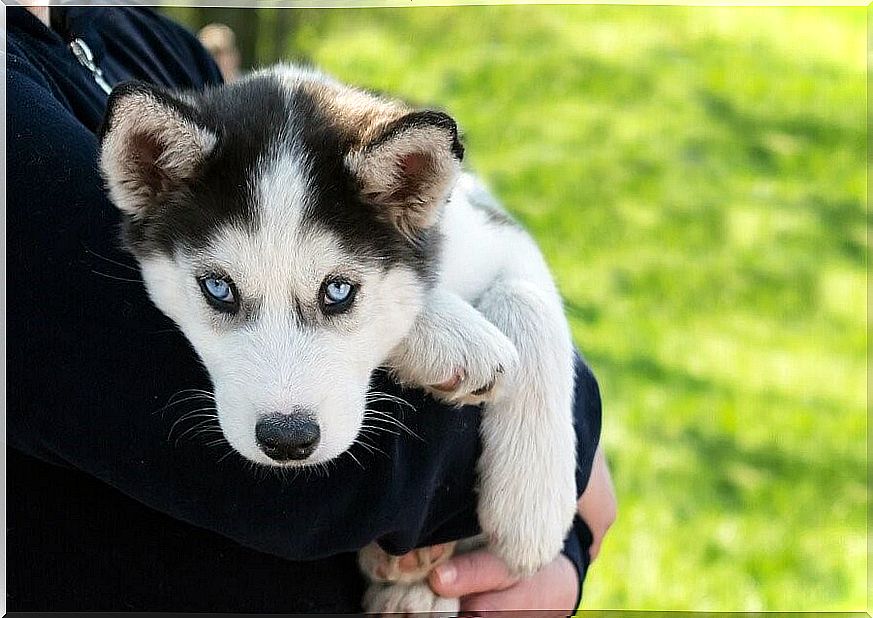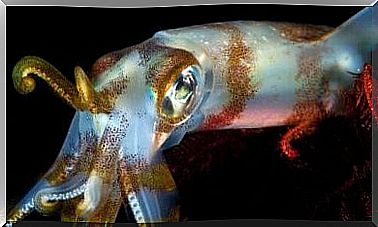Why Do Siberian Huskies Have Blue Eyes?

Siberian huskies are a breed of dog known for their resistance to extreme temperatures, as well as their beautiful blue eyes. But have you ever wondered why her eyes are this color?
These dogs are very easy to identify: their blue gaze catches our attention and reminds some of the cold Siberia. Researchers have also been interested in this topic and have investigated the origins of blue eye color.
Expressive and elegant eyes
This year, the largest genetic comparative study to date was carried out in dogs. Scientists carried out DNA tests to examine, among other things, the color of the eyes and fur of the Siberian huskies.
The researchers found a genetic variation that determines the eye color of these dogs.
Research was carried out on 6,000 specimens of this breed. The owners of the study participants used a DNA testing device to determine or confirm the purity of the breed and to examine possible health risks of their four-legged friends.

The success of this study relies on the scientists having access to a large amount of data provided by the test equipment.
The information was collected through an online survey of the owners of these pets, who voluntarily shared the necessary data. They also provided photos of the animals to the researchers.
Why do Siberian huskies have blue eyes?
Analysis of the information gathered revealed that a gene variant on chromosome number 18 is related to the blue eyes of these Eskimo dogs.
In blue-eyed huskies there is a duplication of a DNA fragment in this chromosome, which occurred near the gene AlX4. It is related to eye development in mammals.
There are several breeds of blue-eyed dogs, including the Australian Shepherd and Border Collies. In these breeds, however, the blue eyes are inherited recessively. This means that two mutated copies of the gene are required for the blue color to appear.
This genetic variation occurs in humans in the HERC2 and OCA2 genes, causing blue eyes. The gene variation in the Siberian Husky leads to less pigment production in the eye. This reduction in pigmentation makes the eye look blue.
According to experts, there is no such thing as a blue pigment. It’s the way light falls on the eyeball and is reflected. This creates the appearance of blue, just as the sky looks blue but space does not.

Massive support
One of the most striking things about this investigation was the large amount of information that the experts had at their disposal. In recent years, they have also examined neurological diseases in German shepherds.
This study became an absolute challenge to get the DNA from 40 samples of this breed as they had to travel several kilometers with materials and equipment to collect the samples.
Volunteers in this study took samples from their pets and then sent them to a collection center. Then they filled out an online form with details about their dog’s characteristics.
This dynamic lays the foundation for a new kind of genetic research in the 21st century.
The owners of the examined Siberian huskies were happy to support the study. Only rarely do you have the opportunity to participate directly in research studies of this kind.
This type of collaboration inspired researchers who decided to further study the canine genome.
Projects are already being launched to learn more about the morphological characteristics of Siberian huskies and to conduct other studies on the health of these beautiful dogs.









